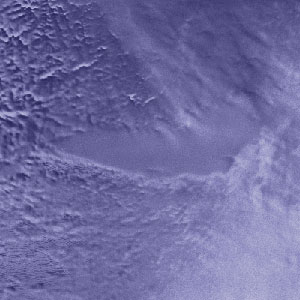
Safeguarding Antarctica's Buried Lakes

Hundreds of mysterious bodies of fresh water are trapped deep inside Antarctica's massive ice sheets. Polar scientists have been clamoring to explore these buried lakes for years, knowing that they may hold secrets to the origins of life and past climate change. The drilling technique the Russians used to breach Lake Vostok on Feb. 5, however has many concerned about contamination.
ANALYSIS: Lake Vostok Geyser Opens 'Small Window' for Russians
Biologists and engineers with the British Antarctic Survey are taking a more cautious approach. Martin J. Siegert of the University of Edinburgh in Scotland and his colleagues have a plan to sample a small subglacial Lake in West Antarctica -- using planetary protection protocols. They spell out the details in a report in Reviews of Geophysics.
In preparation for drilling, set to begin in November, engineers with the British Antarctic Survey completed in January a grueling overland journey to deliver drilling equipment to the designated site at the base of the Ellsworth Mountains (above) in West Antarctica. The target: subglacial Lake Ellsworth, which lies 3.1 kilometers of solid ice.
PHOTOS: Extreme Engineering in Antarctica
The high-tech instruments the team has designed and built to take water and sediments samples comply to the same space-industry cleanliness specs expected for the Martian rovers. Getting the probes through all that ice will take a mighty long hole, and that process needs to be "clean" as well.
To avoid contaminating while drilling, the team will use pressurized hot water, rather than a metal drill bit. And by using (and recycling) melted glacier ice as the drilling fluid, they avoid the possibility of introducing foreign substances to the lake. (Traditional drilling fluids, such as those the Russian team used to reach subglacial Lake Vostok, contain hydrocarbons.)
Sign up for the Live Science daily newsletter now
Get the world’s most fascinating discoveries delivered straight to your inbox.
ANALYSIS: They Did It! Russians Expose Lake Vostok Secrets
The melted water will enter the 3.4-kilometer-long drill hose at high pressure and flow down to a nozzle that jets hot water to melt the ice. Gravity will guide the nozzle and hose as they are lowered, and the water will follow the melted hole, which has a slightly greater diameter than the hose itself, back to the surface.
The drilling team will take special precautions to empty the bore hole of water before they send their probes into the lake. But just in case, all drill water will pass through a five-stage filtration system to remove suspended solid particles, including bacteria and viruses, before being treated with ultra-violet light to kill anything that passes the filter.
These careful steps are just the tip of the iceberg. You should see the protocol for preventing contamination of the collected water and sediments samples as they make their 16,000-kilometer journey back to labs in the U.K.
This story was provided by Discovery News.









